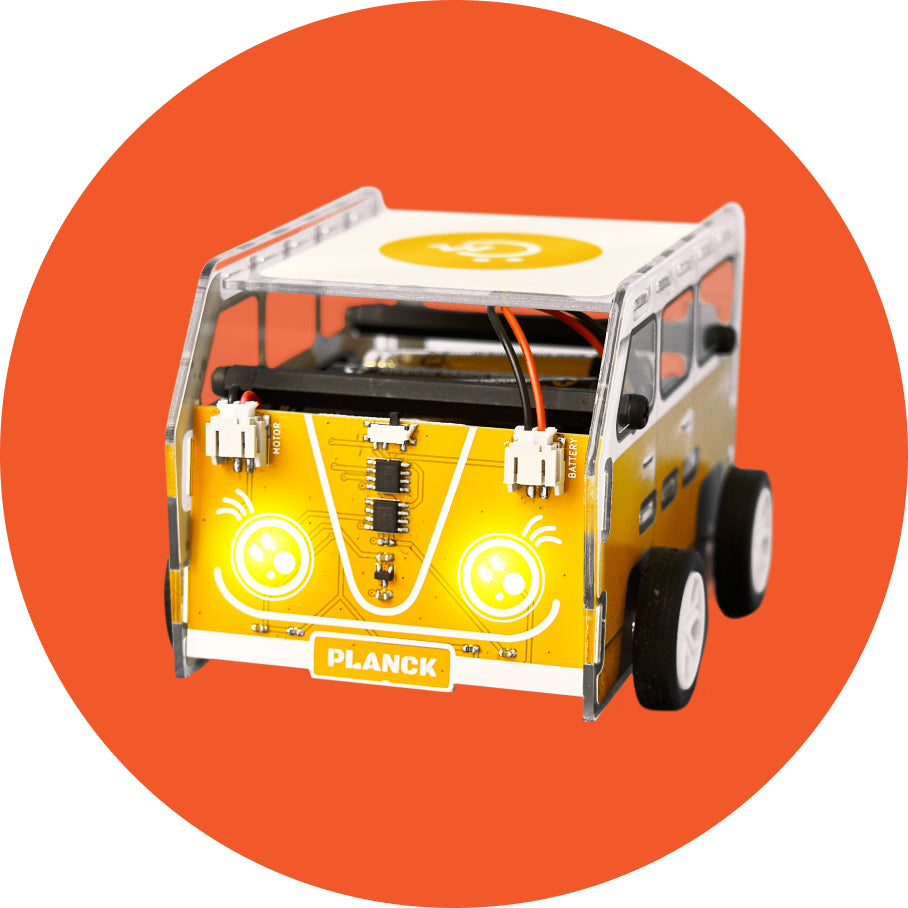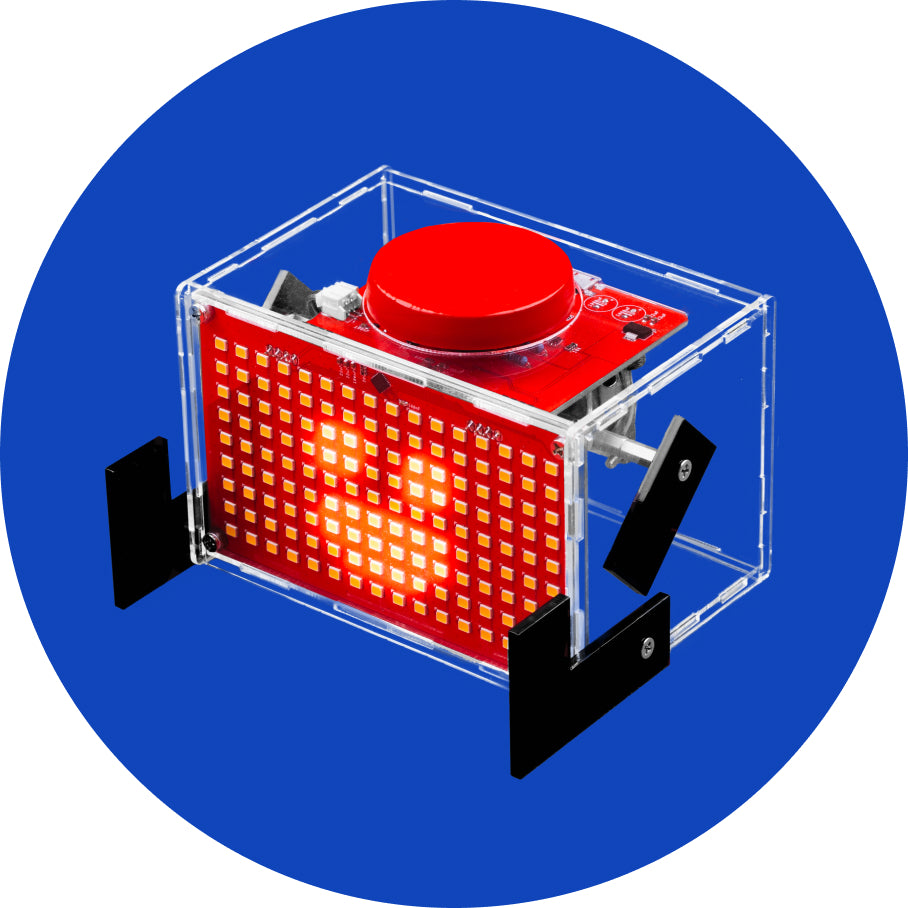10 Best Educational Toys To Help Your Children Focus
How can educational toys teach kids to grow?
Educational toys for kids are like hiding zucchini in chocolate muffins. You see, while kids are engaged in play, these clever toys sneak in a healthy dose of learning, just like those hidden veggies in a delicious treat.
First off, educational toys can teach kids problem-solving skills.
Piecing together a puzzle, coding their own robots, or even building different shapes with stackable blocks—all of these toys encourage little ones to solve challenges. They also learn that it's okay to make mistakes, and it's all part of the fun.
Younger kids' creative side also gets a boost from these toys.
Playing with learning toys encourages imaginative play and opens up new worlds of possibilities. While we can't expect babies and toddlers to build complex structures, setting up a creative environment lays the foundation for their future growth.
Lastly, the reason why you're reading this article: educational toys for kids help teach focus and patience.
When a child tries to complete a project, they learn the value of sticking with something until they succeed. Sure, it may be frustrating when the pieces don't fit or a robot seems just impossible to code, but these moments are a vital part of the learning process.
These fun learning games teach kids that challenges are actually opportunities in disguise, and that with a little persistence, they can overcome even the biggest challenges.
Still, a sheer number of STEM learning toys on the market might confuse parents looking for quality gifts. We'll now see how to decide on the best toy type for your kid.
What kind of toys help a child's development?
The most expensive toys? No.
Okay, how about the most complicated ones? Again, nope.
If you're looking for toys for kids that can help them boost their development and focus, you should go for those that strike a balance between fun and learning.
There are so many categories to choose from. At the moment, the most popular types of educational toys are those related to arts and crafts, role play, and developing motor skills.

Image source: Fortune Business Insights
With such a wide variety of options, you'll definitely be able to find the perfect toy for your kid that's aligned with your child's interest.
Speaking of the child's interests and individuality as a main criterion for choosing the best toys, remember that every great educational toy allows free play. As Claire McCarthy, MD, Senior Faculty Editor at Harvard puts it:
"The toy should be what gets things started; the rest should be up to the child. Children need to learn to think things through, come up with ideas, and be creative."
So, don't settle for toys that only allow one way to play. When a kid is done with such a toy, they'll simply move to the next one, which is not beneficial to their focus skills at all.
Instead, you should search for learning toys that let kids innovate and explore. Only that way will your child be able to stay engaged in meaningful play, working on their ability to focus.
10 best educational toys for kids (all age groups)
It's time to put theory into practice. Keep reading, and you'll find the ten best educational toys that are equally fun and effective in nurturing your child's cognitive abilities.
#1 Wacky Robots
If you're looking for basic toys that take two steps to assemble, you might want to keep looking, because Wacky Robots will make your child work their brains and hands quite a lot more than that.
Wacky Robots is the name of an educational subscription line that delivers a new robot kit to your child every month. Each robot is different and has its unique capabilities.
For instance, the one that you see below is called Hertz, and it lets kids build their own Bluetooth speaker that lights up.

A three-month subscription is priced at $37,99, while subscribing for a year unlocks even greater value, with a box costing $29,99. The robots are designed for the ages nine and beyond.
Pros and cons
- Pros: In addition to looking extremely cute, each of Wacky Robots helps develop your child's brain, especially in the robotics and electronics areas. Moreover, the subscription format means that kids will always have an exciting project to look forward to.
- Cons: Robots from this subscription line require patience and concentration. As opposed to, say, LEGO bricks, you can't mix and match parts, so following precise instructions may be frustrating to some kids. Still, that's how focus and the related skills are built.
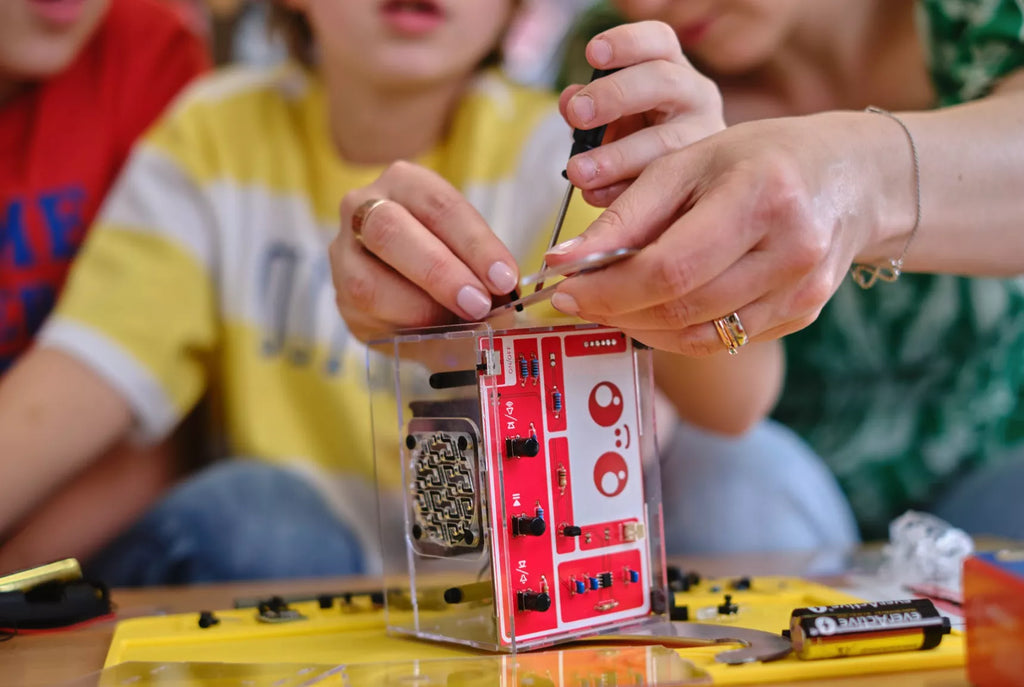
Why is it useful?
Wacky Robots do more than help your children gain essential STEM skills. They also introduce the kids to technical concepts that they see in their day-to-day lives.
For example, if you have dimmer lights at home, your kid might be wondering how they work. Well, one of the Wacky Robots contains a variable resistor that dims LED brightness, so your kid can play with the robot to see how the real-world appliance works.
So, why not explore a different tangible subject every month?
#2 STEM Box
In case you liked the idea of Wacky Robots but want something a bit more challenging to build and play with, make sure you check out the STEM Box.
STEM Box is also a subscription line, and you might be drawn to it if your kid likes tech-oriented DIY projects. With the STEM Box, you get to build and code cool gadgets such as a DIY voice assistant, robotic arm, or even a smartwatch.
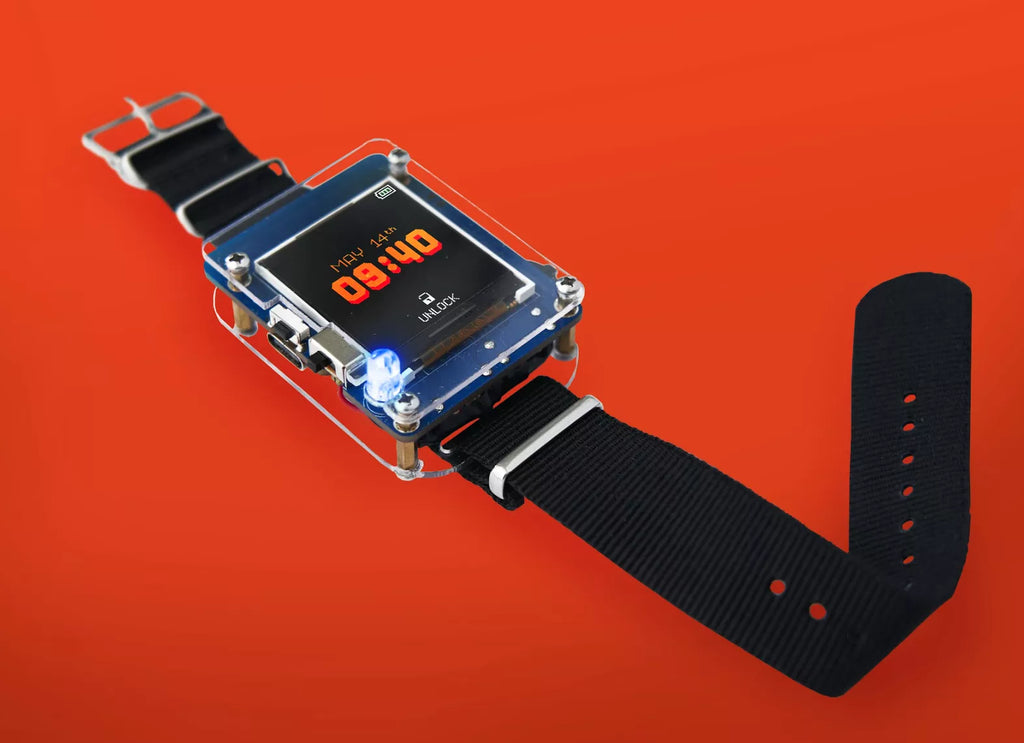
If you want to try out STEM Box, you can get a one-time delivery for $109,99. A yearly plan lowers the price to $98,69, and the two-year plan further reduces the price of a box to $86,99.
As STEM Box projects involve coding, they're perfect for older kids interested in programming in age-appropriate languages. Because of that, eleven is the recommended age for building toys of this kind.
Pros and cons
-
Pros: STEM Box products offer something really unique: you can adapt the toys to your child's preferences! The fun isn't over when you build the toy. In fact, that's the time to start programming your own games, move routines, and more. So, you don't have to worry about your kids playing video games too much; it's a whole 'nother story when they're creating their own interactive experiences.
- Cons: If you're looking for a toy that your kids can play with on the go, this isn't the one for you. To operate your STEM Box gadgets, you'll need batteries and a computer. Sorry, light packers!
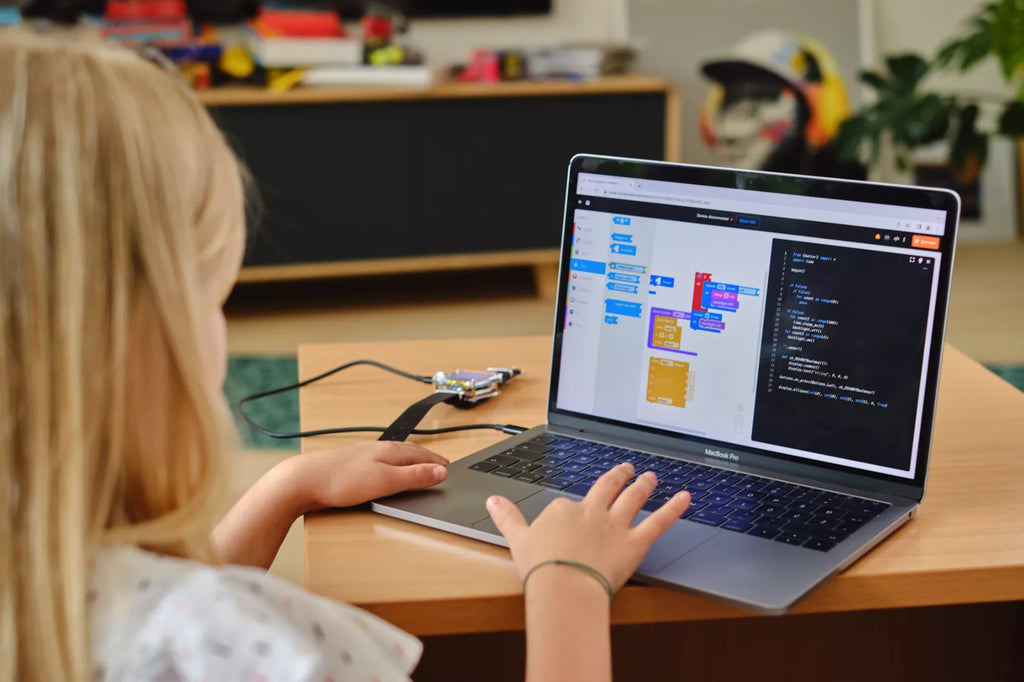
Why is it useful?
STEM Box is the ultimate tool that helps develop children's focus. We know—poor focus is often the result of too many distractions and choices available at all times.
However, these learning toys allow your kid to explore the synergy between soldering, hardware assembly, electronics, and coding. That way, kids follow a logical sequence of steps, bring the toy to life, and observe how all the components work together.
#3 Light-Up Terrarium
Oftentimes, little biologists-to-be prefer playing with flora and fauna over robots or toy cars. If you have a nature aficionado at home, we suggest building a light-up terrarium.
There are several versions on the market, but we think that this one, created by Dan&Darci, is particularly nicely done.

Image source: A Mighty Girl
This toy allows your children to practice fine motor skills by carefully layering materials for optimal growth. Additionally, screen-free activities like this one won't interfere with your kid's bedtime.
If anything, they can use it as a unique night lamp, thanks to the light-up lid that you charge with a micro USB cable. Instead of flickering screens, this gentle illumination is a nice focus-enhancing addition to your kid's room.

Image source: Dan&Darci
The product is advertised to kids the age of eight and above. You can find it in multiple stores online. The creators' official store offers it for $24,99.
Pros and cons
- Pros: Rome wasn't built in a day, and neither is this miniature ecosystem. In other words, it takes time and care before your child gets to witness the terrarium flourish and glow. They can practice focus by observing the changes in the jar every day.
- Cons: What makes this toy attractive to some kids, makes it challenging to others. There's no guaranteed success in keeping plants alive (don't ask us how we know 🤫). So, finding the right amount of watering and sunlight can be tricky.
Why is it useful?
DIY science projects don't have to be complicated to be effective. This toy not only teaches children about the balance of nature. It also helps them focus, as it encourages them to observe, experiment, and care for their plants, which is not something you can do without focus on tiny details.
#4 Coding Critters
Coding Critters are adorable animal companions that serve as a simplified, early introduction to the basics of coding through engaging play.
There are different Coding Critters sets featuring animals such as dogs, dinosaurs, unicorns, and more. For instance, the Ranger and Zip set features a pair of puppies who love to play. It's almost like having a low-maintenance pet!

Image source: Learning Resources
Kids can use the buttons on Ranger's back to program his movements and interactions with other toy pieces.
If you're looking for a great gift for a very young child, this might be it. This learning toy is made for kids of the age of four and up; that's how approachable it is.
The Critters are produced by the same manufacturer as GeoSafari Jr and Spike the friendly hedgehog, Learning Resources. Learning Resources sells different Coding Critters kits at different prices, and the dog-themed one we've seen above costs $45,99.
Pros and cons
-
Pros: Coding Critters are completely screen-free, so you can include this learning toy in your screen-reducing strategy. They also foster problem-solving skills as kids create their own coding sequences. If you want to practice focus through structure, you can follow the storybook that comes with each kit.
- Cons: As expected from such a simple toy, there's limited functionality compared to some other robotics and coding toys. Coding Critters can only move forward, backward, left and right in addition to spinning and pausing.

Image source: Learning Resources
Why is it useful?
STEM kits like this one help kids develop an interest in STEM concepts. They teach children about logical thinking and cause and effect. By playing with these cute creatures, kids are learning about sequencing in coding with no screen in sight.
#5 CircuitMess RC Bundle
What's better than a fun educational toy? Two learning toys that can interact!
The CircuitMess RC Bundle provides you with precisely that: it combines Wheelson, a programmable AI car robot, and ByteBoi, a DIY game console.
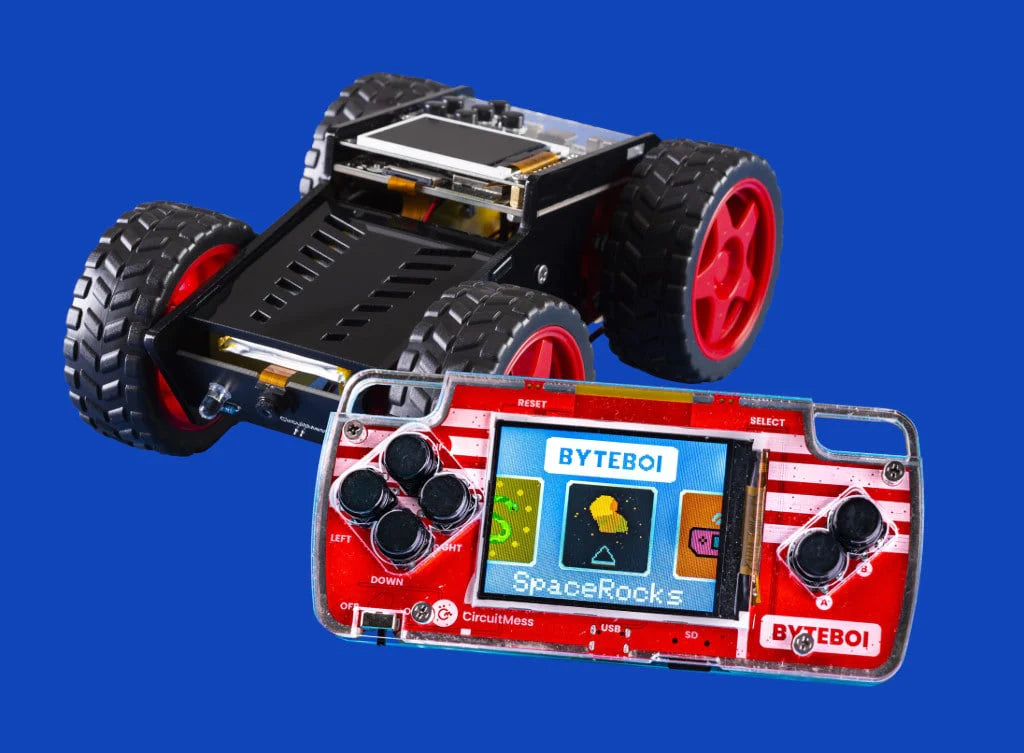
In addition to playing with each toy independently, your child can use ByteBoi to control Wheelson and explore their capabilities.
The bundle is designed for ages eleven and up because it's more complex (and more rewarding!) than your average science DIY kit. The regular price of this RC bundle is $252,69, but you can get a 15% discount by subscribing to the CircuitMess newsletter.
Pros and cons
-
Pros: Equipped with AI technology, this bundle can help you introduce your child to the world of engineering, programming, and robotics. Robots won't be an abstract concept anymore when the child sees how they work up close.
- Cons: Building a robot car is a demanding task, let alone coding it. Despite the detailed instructions, there can still be some bumps in the road, so prepare a small pep talk about the importance of not quitting, even in play.
Why is it useful?
This bundle is all about learning to reap the benefits of your hard work. First, your child has to assemble both toys, putting their motor skills and electronics knowledge to the test. The second part is coding the toys, which takes as much patience and focus. After all the hard work is done, they can enjoy the magic of remote controlling a self-built robot.
#6 LEGO Education BricQ Motion Set
Aspiring engineers and physicists are fairly easy to spot: it's always the kid tilting their glass just a bit too far, observing how the liquid level changes with the angle. Parents with such kids should look into the LEGO Education BricQ Motion Essential Set. That way, kids can explore physics with a lowered risk of OJ spillage.
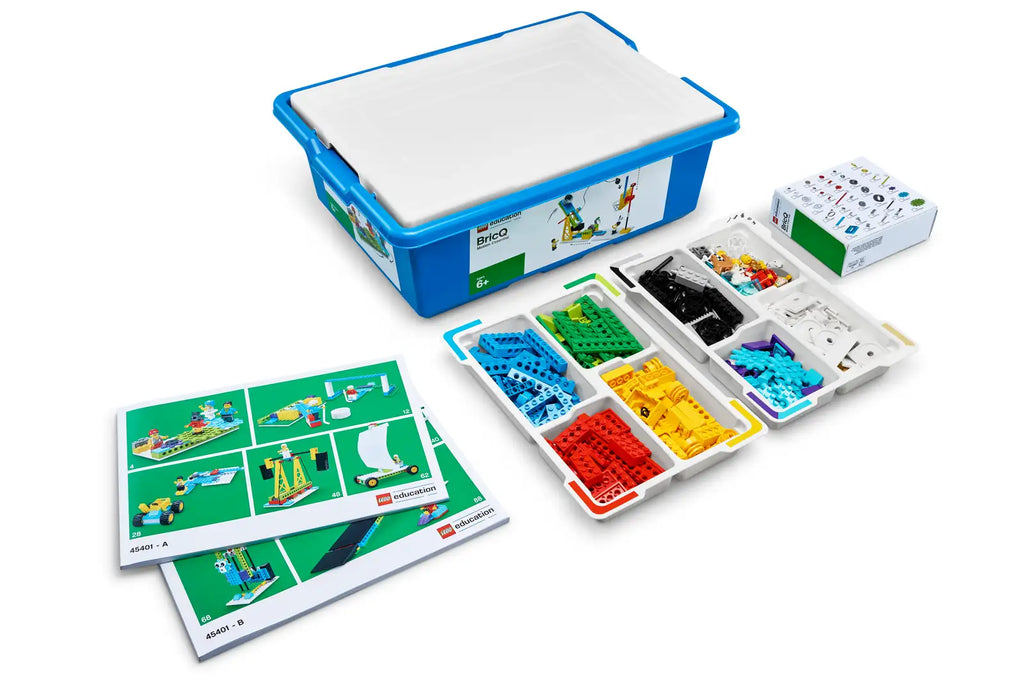
Image source: LEGO
The 523-piece LEGO Motion Set lets kids explore the laws of forces and motion.
With elements such as weights, ropes, and gears, children can create different models to grasp fundamental physics concepts.
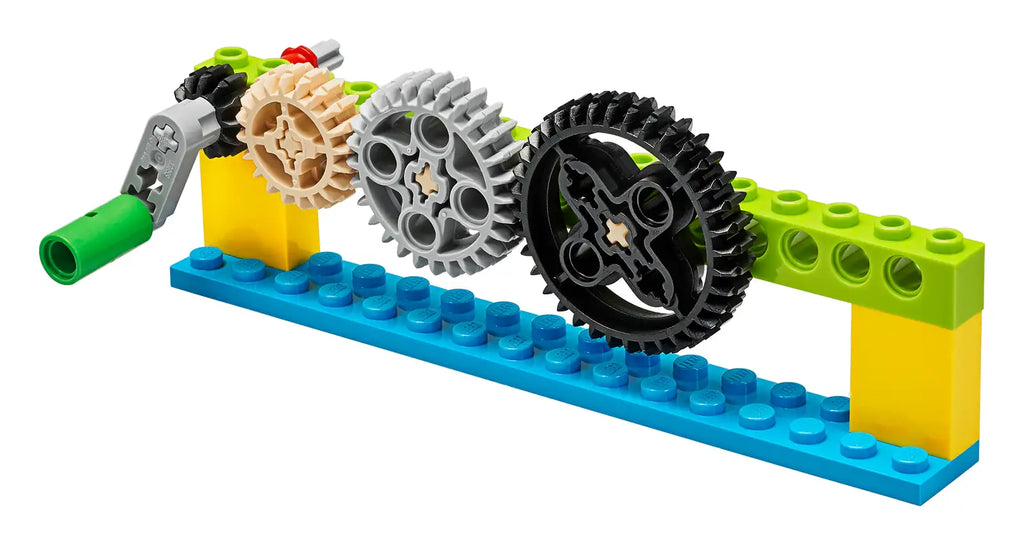
Image source: LEGO
The set is made for the age six and beyond, although younger kids can also play with it. Just be careful if there's a toddler or a baby playing nearby because small pieces can pose a choking hazard.
Multiple retailers offer this learning device, and the official store sells it for $133,95. The price also includes additional educational materials.
Pros and cons
- Pros: If your child wants to explore the principles of forces, they will first have to build their model. For instance, you can't explore transferring kinetic energy through gears if gear teeth aren't aligned properly. That's just one way this set teaches your child focus and attention to detail.
- Cons: Some kids may require additional instructions or parental guidance to fully understand the physics concepts. So, be prepared to talk your child through what's happening.
Why is it useful?
Fine motor skills, spatial awareness, creativity, science—with so many possible construction models, this set teaches it all.
#7 Fossils Dig Kit
Don't worry; we haven't forgotten about our little dino lovers. The next educational toy on our list is the Real Fossil Excavation Kit from the London Science Museum.

Image source: Science Museum
The kit contains an excavation block along with all the tools you need for digging. You don't have to settle for replicas, there are real fossils in this kit.
The manufacturers advertise the kit as suitable for ages ten and up, but reviewers reveal that their kids younger than that have also enjoyed the fun project. The kit is sold for £15.00.
Pros and cons
- Pros: There's no CTRL + Z with fossil excavation. To keep the fragile fossils intact, your child will have to approach the project with focus and precision.
- Cons: Playing with this toy is one of those messy learning experiences because of the dust flying around.

Image source: Science Museum
Why is it useful?
As we've said, you can't undo a broken fossil. In addition to building focus, carefully chiseling and brushing around the fossils will help your child increase their fine motor skills and hand-eye coordination.
#8 Botley the Coding Robot
Botley the Coding Robot is another toy that kids can use for exploring the world of programming without getting overwhelmed.
Designed with ease of use in mind, Botley comes with a remote control. Kids can enter their commands on the remote programmer, which then transmits commands to the robot. No screens are involved anywhere in the process.

Image source: Learning Resources
Botley is suitable for ages five and up. While younger children can play simple learning games with Botley, those of older ages can program longer sequences.
Buying directly from the manufacturer will let you purchase the kit for $74.99.
Pros and cons
- Pros: This toy robot is nearly ready to play right out of the box; you just need a screwdriver to secure the batteries. The kit also includes accessories such as detachable robot arms and obstacle-building pieces.
- Cons: Screen-free coding only gets you so far—Botley was never intended to let you create real apps. This also means that your kids are likely to outgrow its simplicity. When that happens, we suggest that you switch to block programming as the easiest introduction to coding.

Image source: Learning Resources
Why is it useful?
This educational toy is helpful because it shows that you don't need the most advanced robots to create fun and challenging learning games.
In fact, the limited commands may be beneficial because your kid will have to focus and think hard of the ways how Botley can navigate the course they've designed.
#9 Magna Tiles
You can't make a list of the best educational toys for kids without including the well-known, bright plates: the Magna Tiles.
These building toys are an excellent method for spatial exploration as they allow kids to build shapes in all dimensions. Well, not really the fourth dimension, but definitely in three of them.
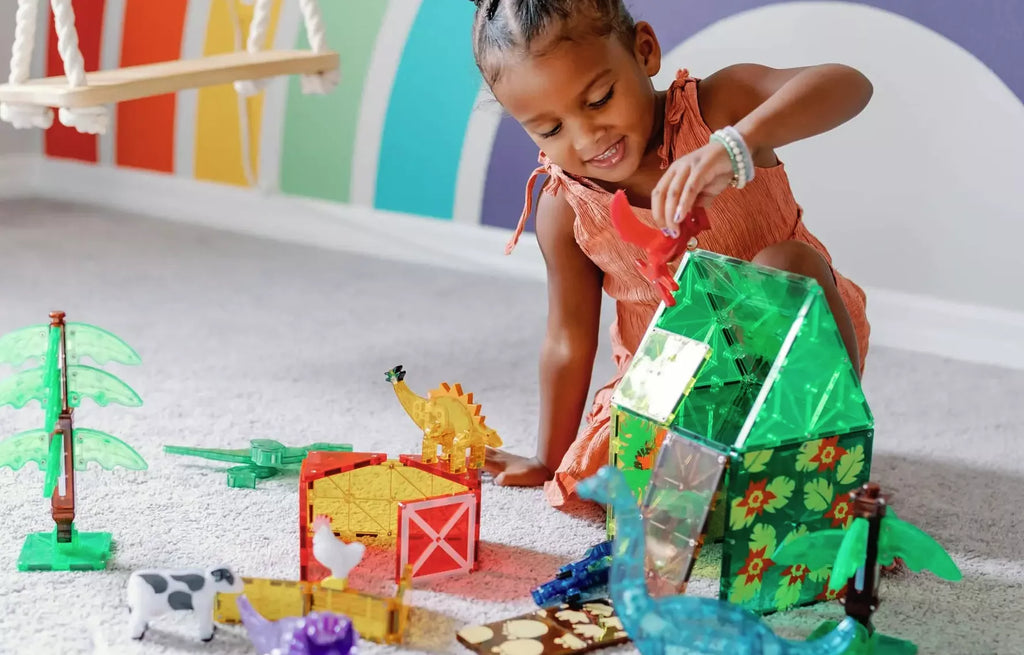
Image source: Magna Tiles
Magna Tiles belong to a small group of learning toys appropriate for all ages. The product is advertised as appropriate for the age of three and up, meaning that even babies and toddlers can play with it.
However, the upper limit doesn't exist, and older kids of all ages can use the tiles for building and exploring complex shapes.

Image source: Magna Tiles
You can buy sets with different numbers of pieces, additions, and accessories, that also differ in prices. For instance, the kit used to build the shapes you see above contains 100 pieces and costs $119.99.
Pros and cons
- Pros: Open-ended toys like this one allow little ones to explore their creative side as they combine pieces in numerous ways. There are no rules; you can mix and match different bright colors and shapes to make unique sculptures. That's a nice break from structured or repetitive activities that children often face at school.
- Cons: With the price of more than a dollar per tile, this toy may not be in the budget of all parents.
Why is it useful?
In the world of construction, each piece matters, and precision is key. By playing with learning toys like Magna Tiles, children learn to focus and deeply concentrate on their task.
#10 KiwiCo Science Kits
We promised we'd list learning toys for kids of every age, and there's one age group that's still waiting: babies! If you want to encourage your toddler or baby to practice independent play, you could explore KiwiCo, a company producing subscription science kits for all ages.

Image source: KiwiCo
These age-appropriate crates help children explore the world around them. As babies grow, kits evolve to activities such as color recognition, counting, and problem solving. Your toddler can become a professional shape sorter in a matter of months!
The company makes kits for ages 0 to 100, and that's why kits differ in difficulty and, of course, the price. Depending on the kit you get, you'll have to pay anywhere between $23,95 and $43,90 per crate.
Pros and cons
-
Pros: KiwiCo offers a multitude of toy categories. With options to learn about STEM, cooking, geography, or art, there's something for all kids, including those who seemingly have no interests.
- Cons: People don't usually mind paying extra for the best educational toys that they can't replicate on their own. However, as some KiwiCo kits consist of fairly simple components, some reviewers think that the price doesn't match the value they receive.

Image source: KiwiCo
Why is it useful?
Regardless of the age group and the topic of the subscription you get, each of KiwiCo's products will help you show your kids how fun science can be. Moreover, if they focus on the task and revisit it multiple times, they will see how different actions cause different outcomes.
What to look for in educational toys for kids?
Before you head out to the store or start an online shopping spree, let's review the crucial qualities to look for in learning toys.
Take into account the learning objectives (e.g. fine motor skills)
Choose the toys that align with your child's specific goals, such as fine motor skills or getting into electronics.
Prioritise durability and safety
The toys you choose should be made of high-quality materials and easy to clean.
How much a toy can engage your kids
Look for learning games and toys that can hold your kid's attention; that's how they build focus.
Encourage open-ended play
A single predetermined outcome makes toys boring. Instead, look for toys that allow kids to explore and innovate.
Educate and entertain your kid with CircuitMess STEM toys
There have never been more options when it comes to learning toys than now.
While exciting, this also means that the selection process can get a bit overwhelming, so we hope that this guide through the best educational toys can help you with deciding what gifts to choose.
If you're still not sure what to get, we suggest going with a toy that allows open-ended play and evolves together with your child's skills, as CircuitMess STEM toys do.
When your kid thinks that they've seen everything that their new toy can do, you can remind them about the unlimited access to the CircuitMess software platform where they can customize their devices and enrich them with new capabilities.
Ultimately, your kid will fall in love with these fun learning games, and continue building their vital STEM skills through play. Who says that learning can't be fun?

